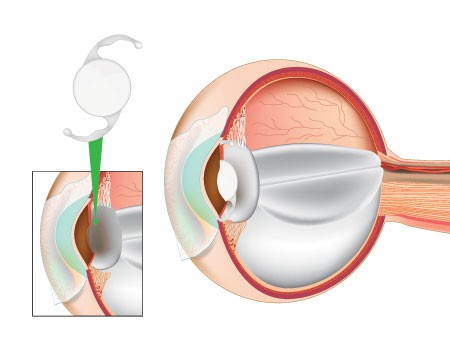
A Guide to Soil Preparation for Successful Planting
If you want healthy plants that thrive, your soil makes all the difference. Get it tested and supplement it where appropriate.
Soil is composed of decomposed rocks and minerals along with organic matter (rotting leaves, sticks, grass, fungus, etc). Clay, silt and sand mixed together in a loam are the best components. The feel test can be utilized to determine the type of soil you have. Clay feels sticky when wet, silt will feel smooth on your fingertips, and sandy soil will feel gritty.
Digging
Sour or sweet, all soil has to be cultivated (ie ploughed or dug) for it to be in good physical condition – meaning having plenty of pore space so air can pass all the way through it, and composed of enough nutritive earths that they are well combined without being too head-tight.
The fall is best for this; however, early-spring digging will work if done so as to not compact the soil. Tilling or digging breaks open old lumps of clay soil; frosts and rain afterwards further break down the soil.
It is pointless talking without taking action; when I say we should dig, I am talking of course about digging. Digging with a spade or shovel is faster and easier than with any other tool, but where the soil is heavy clay, digging with a spading fork can be quicker. Digging involves working the soil when it is bare and not when it is already covered with plants, or where there are already plants; in other words, digging does not and must not mean damaging the roots of plants that are already established.
As you dig, be sure to turn in plenty of organic material – such as leafmould, well-rotted manure, compost, mushroom compost, or any combination makes sense to you. All of these materials improve the texture of light, sandy soils to retain moisture. Composting is also beneficial in heavy clay soils by not adding any extra soil, by providing bulk to lighten soil and improve friability, and by making it easier to work. In either case, any soil where the organic matter is present and well-mixed (as it must be in a raised garden bed) will be more healthful and productive soil. The best way for any gardener to determine if their soil is compacted is to push a stick or rod into the soil and see how far it goes. If you can’t poke a stick or rod into the soil and go 12 to 18 inches, then your soil is too tight for healthy root growth, and you need to decompress it.
Tilling
Mowers till the fields,
Hoeing is reality,
Spring weeds cease,
Rains come in lees.
Blockage is gone,
With seeds set free,
The crops grow fine,
It all works Organizationally.
From the poem ‘Reasons For Tilling’
(From Farming Song Book, 1999.
Available at www.vmpt.org)
NOTE: Today, few gardeners and farmers till the soil. When they do, it is a modified form of the practice known as ‘no-till’, where cultivators try to minimize disruption of earthworms and the topsoil. Here are reasons why people use tilling to prepare soils for planting – control weeds, aerate soil, encourage seed germination, control roots, work plants into the soil, incorporate fertilisers, bring warmer temperatures in the spring to induce germination, and rocks have a place to weave from. Tilling can be done manually or mechanically with a tool used in the fields called a plow, disc harrow, or rototiller.
It breaks up and loosens the soil and helps break up heavy clay soil and any pockets of compaction. Tilling allows air to penetrate the soil, which increases the rate of organic matter decomposition and the release of nutrients for crop plants.
But too much tilling can be harmful to the soil. If tilling is overdone, the soil becomes pulverised and degrades its structure, leading to its drying out more easily. Tilling also disrupts the many beneficial microbes – fungi and other organisms – that create nutrients and help retain soil water, to the detriment of plant growth and disease.
Do not over-till the fields and till only when absolutely necessary. Tilling of the ground is the most destructive of all trades in hot countries because it makes it difficult to store the moisture. And do not till the earth when it is full of moisture through rain or snow-melt, for the soil will form one big lump, which is hard to break up, and will not allow the young plants in the earth to take hold of even a drop of water.
Mulching
Mulch is an excellent way to improve soil quality. It retards weed growth, keeps moisture in the soil, and ameliorates temperature extremes, all while gradually adding humus to the soil.
Additionally, it reduces the need for irrigation water and slows down the evaporation of the soil surface. Mulch helps the soil retain nutrients, and can be used as a replacement for chemically leached and/or synthetic fertilisers (InfoNet Biovision 2010).
Generally speaking, organic materials are preferred because the longer they take to decompose, the longer they keep weeds at bay. If you can’t use organic mulch, then avoid any mulch that is clearly biodegradable, as having it decompose could easily help the weeds grow instead of suffocating them. Wood chips are probably the most commonly recommended way of using mulch, as they are organic and biodegradable, but they do not re-enter the soil. If you have grass and twigs after cleaning up your yard, use those. You can also use straw, shredded leaves and composted material. Tanbark and peat moss are other options. Sometimes pine or cypress needles are used, but you always want to avoid pine needles that are green and fresh in colour because they do a better job of making soil too acidic for most plant growth instead of just sufocating weeds.
Regardless of what kind of mulch you use, lay it down no thicker than about 10cm (4in) and make sure that soft-stemmed plants have an area around their bases that remains unmulched to avoid rot. Mulch that is too deep can keep irrigation water from reaching plants’ roots, and it can smother them or damage their roots. Do not pile mulch up against the base of a tree trunk either, since it can cause rot and extra diseases.
Fertilizing
Soil fertilizer, which is the key element for the plants growth, is used in made up the soil contain element that pull out from the soil during growth and make healthy structure of soil and plants. Fertilizers can be natural or synthetic, they are available in liquid, powder or granules form. Before applying the good fertilizer we should be well investigated of the types, each fertilizers compound contains remain indicating as an ingredients of the soil.
Over all, Organic fertilizers are best for environment than use of chemical fertilizers.
There’s no way to give specific amounts for fertiliser, because every garden or site is different. But a good soil test will tell you if your soil’s nutrient levels are low, adequate or excessive, and will also tell you your soil’s pH (acid-alkaline level) as well as the amount of potassium (K), phosphorous (P) and magnesium (Mg) it contains. The test will indicate how much nutrient you need to add to a garden if you want it to produce well.
The rootball of your plant will contain bits of several kinds of soil, so if you dig down only six or eight inches and transplant into soil with the same texture, you’ll be narrowing your chances of success. For most plants, you’ll benefit by amending the soil you have, to soften and loosen it, improve aeration, and perhaps to control drainage. Reading up on soil management is a good idea because different kinds of soil need different amendments. A diverse combination of particles yields better soil than just one type, says Charlotte Henderson, an agricultural horticulture specialist at Cornell Cooperative Extension in northern New York. The ideal soil has some of each: loam. It contains clay, silt and sand particles but is rich in organic matter, retaining water and nutrients without draining slowly. To amend it, add organic matter any way you can: manure, compost and shredded leaves. You want its organic matter to make up about 4 per cent of your garden.
This organic matter can be applied before tilling up your seedbeds or after, but if applied before tilling, any ammonia volatilisation needs to be avoided, as if possible. Additionally, the fertiliser can also be banded in-row, surrounding individual rows.


WordPress database error: [Table './casirzxo_wp218/wp93_comments' is marked as crashed and last (automatic?) repair failed]
SELECT SQL_CALC_FOUND_ROWS wp93_comments.comment_ID FROM wp93_comments WHERE ( comment_approved = '1' ) AND comment_post_ID = 272 AND comment_parent = 0 ORDER BY wp93_comments.comment_date_gmt ASC, wp93_comments.comment_ID ASC